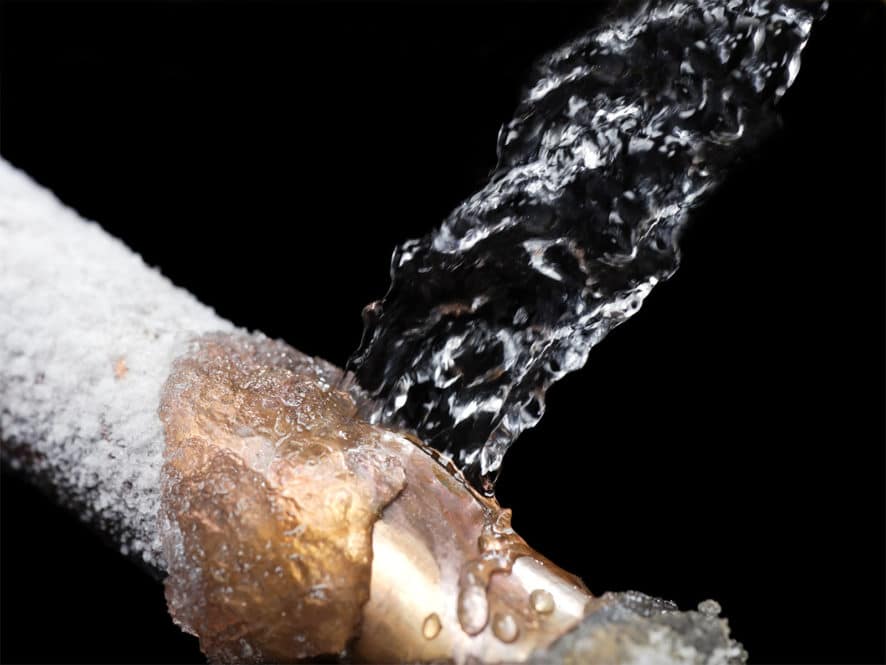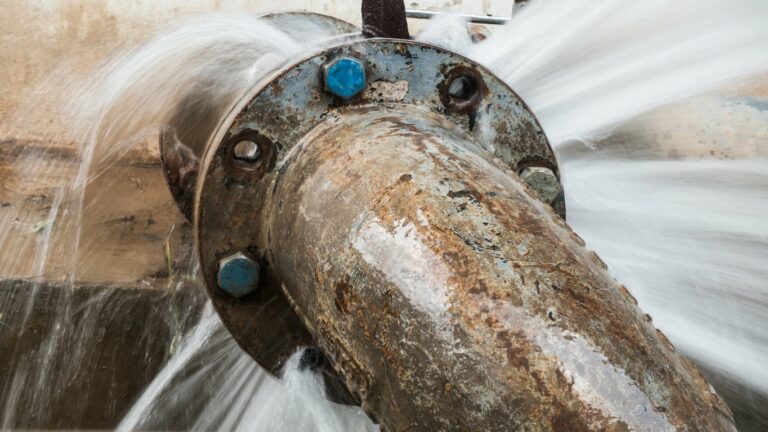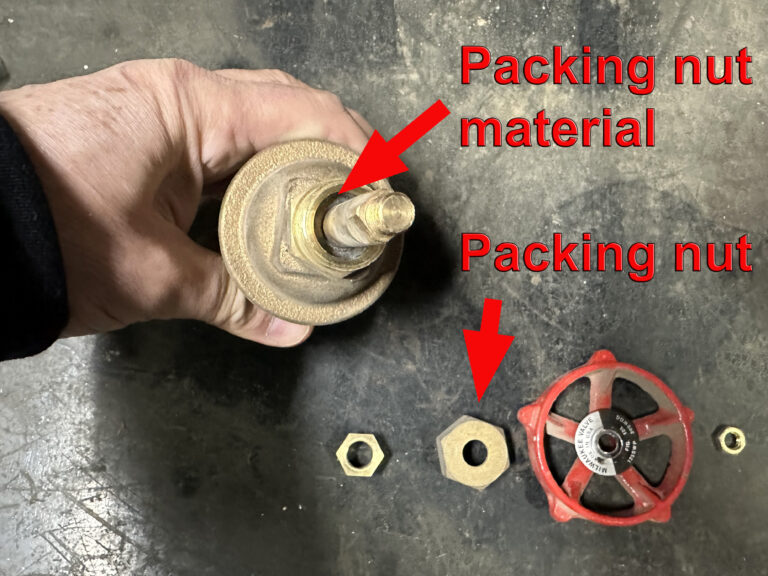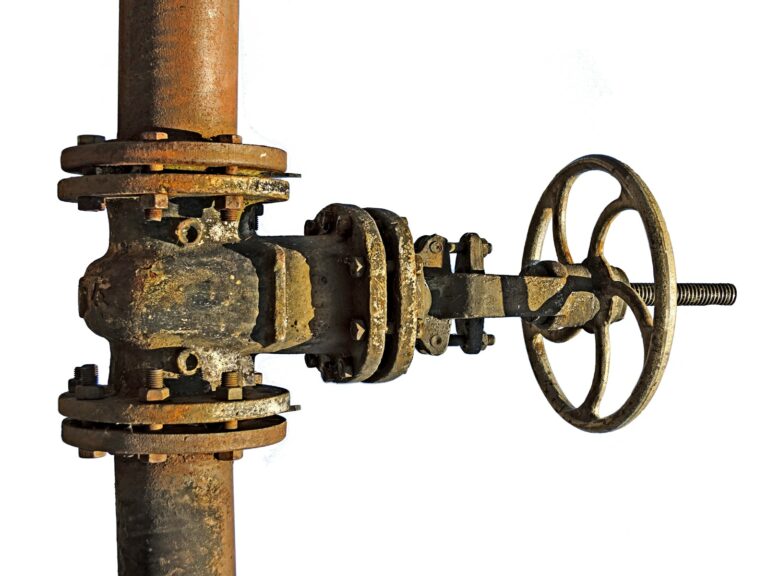You may think that underground water lines never freeze. That is until you wake up one day and have no water supply in your home or business. In most cases a proper installation, and knowledge of the local climate, you will know how to keep pipes from freezing that are buried underground. Of some comfort is the fact that leaks on the street side of the meter will not be added to your water bill.
Having technical knowledge is the foundation of a long-term solution
A first and essential bit of required knowledge is knowing the frost level of your area, which is how deep the ground will freeze during the coldest period. After familiarizing yourself with the local frost level and then make sure your water service line is installed below that frost level. Another good piece of information to know in NYC is the depth requirements for water service lines in New York City.
Defrosting a frozen water line:
Using a torch to defrost a frozen water line can be dangerous. As frozen water melts inside the pipe, it must have an outlet to escape. If not the water can become super-heated steam and burst through the pipe. This can cause a severe burn injury.
Always heat the entire run of frozen pipe evenly, and have an outlet for the thawed water to run out of the pipe from an open end or outlet.
Under what circumstances are water pipes installed above the frost level?
Of course, a key in how to keep pipes from freezing is to install them below the frost level. However, in certain circumstances, it is virtually impossible to install a water service line below the frost level (so the water line will not freeze under any circumstances). These situations are not common, and in some instances, other conditions exist that may freeze a buried water line solid. These are the 4 major reasons that steps have to be taken to prevent pipes from freezing that are buried underground:
1. Underground utility obstructions
Extensive underground utility obstructions can prevent a buried water service line from being buried below the local frost level. In NYC this can happen in an area such as Manhattan, where there are an extensive amount of utilities buried underground. Large banks of utilities can extend from a relatively shallow elevation, down to depths many feet deep. In these cases in particular, subsurface water works requires a great deal of expertise.
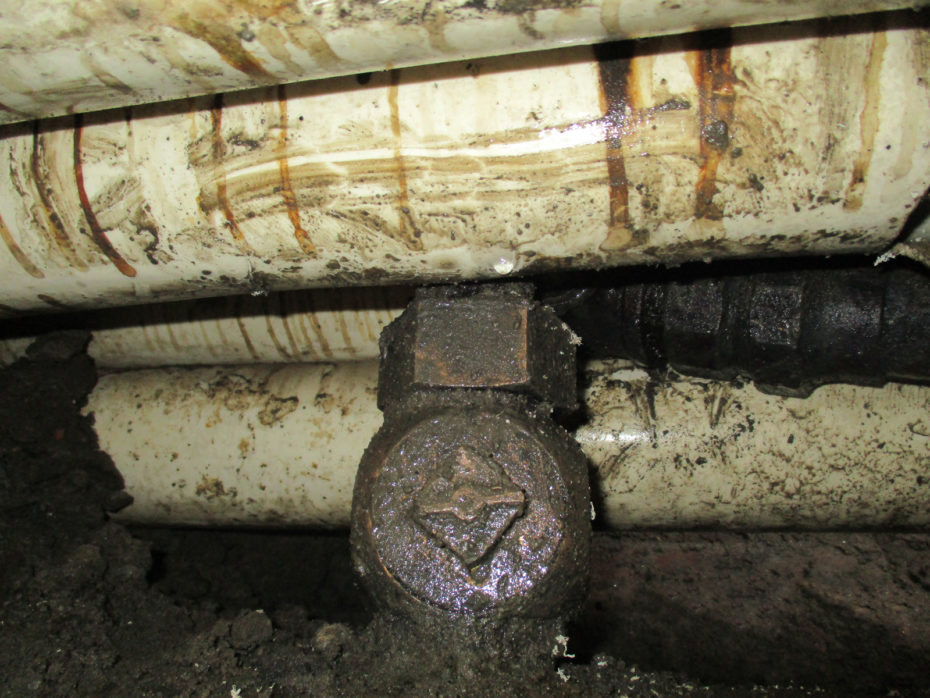
2. Large public sewers that are close to the surface
In certain areas, a large public sewer might line right in the way of the run of a water service line. This usually occurs with large storm sewers. Storm sewers produce no heat, unlike sanitary sewers, because they do not carry wastewater. This situation frequently arises in the Rockaways, which is in Queens, New York City. That is because the storm sewers are commonly very shallow, and there is a very high water table. That means going under the storm sewer is not even an option. This makes it technically challenging to keep pipes from freezing when they are underground.
Another challenge is that many storm sewers in the Rockaways empty directly into bodies of water. During low tide, Arctic-like winds whipping over the water create a freezing blast flowing through that same storm sewer. If a water line is close to that same storm sewer, and not protected, it will freeze solid in minutes. In many cases being an expert at how to keep pipes from freezing comes in handy in unique underground situations.
3. Severe groundwater conditions
In many localities, there may be a very high water table. The water table itself may be higher than the frost level. That makes installing a buried water line below the frost level near impossible. While saltwater itself from the groundwater will insulate your water line, that is only during high tide. During low tide, your water line could freeze solid. This is another case where steps must be taken to prevent water pipes from freezing.

4. Underground Gas Lines that create a freezing effect in the Winter
A very unique situation does seem to present itself in the coldest of Winters in NYC. It seems that in certain areas, water lines in close contact with gas lines can freeze solid. In these rare cases, the water line may be below the frost level, and freeze anyway. In these cases, the 4 step process listed below must be followed.
Once frozen, it can take many days, or weeks for a buried line to thaw out. In many cases, the water service line has to be replaced to restore water to the affected premises. All the more reason they protect water lines from freezing when they are originally installed.
4 Steps in How To Keep Pipes From Freezing That Are Buried
The following 4 step process is the accepted standard to avoid pipes from freezing that are buried underground, yet above the frost line. If your water line is shallow, and not protected by these 4 steps, you are advised to ensure these steps are taken. The alternative is either keeping your water running all Winter long, and getting a huge water bill, or losing your supply of water for an extended period of time.
In the worst cases water line freezes then bursts, and needs to be completely replaced. With that said, it’s better to make sure its done right the 1st time, using these 4 steps.
1. Using proper & approved insulation is key to how to keep pipes from freezing
Unlike household insulation, specialty insulation must be used to protect underground pipes. Regular house insulation is just fine for your home. However, once buried it will compress and lose its insulating ability. Compressed insulation no longer has the air barrier or intended insulating factor.
Specialty insulation meant for underground water lines is key to how to keep pipes from freezing. Up until recently, a horse hair product was used. It would be carefully wrapped around the water line, with 2 or 3 layers of insulation. Wire tie wire would be used to hold it in place.
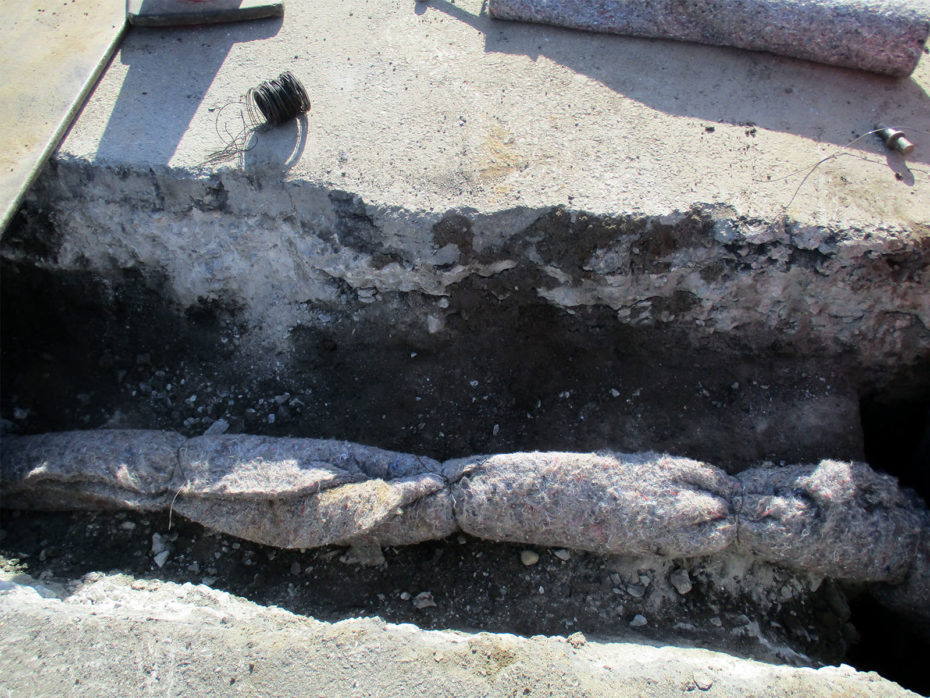
2. Waterproof the insulation
Like almost any underground installation, steps must be taken to insulate the water line properly. The insulation itself must be waterproofed. If this is not done the elements, or ground water, will disintegrate the insulation. Then it would no longer serve its purpose. To achieve this protection, plastic is carefully wrapped all around the insulation. Following all of the above steps is key to keeping pipes from freezing.
3. Steel plate shallow water lines
When water lines are less than 36” deep in NYC, 1/4″ steel plating must be placed over the water line in the roadway. This serves 2 different purposes. Firstly, the plating distributes the vibration from vehicular traffic overhead to avoid long-term damage to the water line. Over time, vibration can cause fittings to come loose, or cause other damage.

There is a second advantage of using steel plating. The steel plating prevents future underground work from damaging the shallow water line. When a water line is shallow, there is always the chance that future work, such as using a jackhammer, could break the line. While steel plating may not prevent pipes from freezing, it will prevent them from breaking. So while the steel plating is not a key to knowing how to keep pipes from freezing, they are a key to a long-lasting installation.
4. Proper backfill and compaction
The last vital step is using proper backfill material, and then compacting it properly as well. This is always important with underground installations, but more so with shallow lines. For instance, sand has a greater insulating property than soil with a high clay content. Therefore sand is the preferred backfill material when it comes to shallow water lines. Using sand as backfill will greatly help prevent pipes from freezing that are buried, and shallow.
Surface sinkages cause subsurface damages
When lines are shallow, sinkages have a greater chance of damaging your water line, or any line for that matter. That is another reason why proper compaction is essential. Not to mention, who wants a sinkhole as a reminder that they had sewer or water line work done? So yet another key to knowing how to keep pipes from freezing is proper backfill and compaction as a final step to the underground installation.
About the Balkan Sewer And Water Main Service
For over 70 years, the Balkan Team has been devoted and passionate about high-quality underground sewer and water main installations for their clients. That means taking pride in every installation and never cutting corners. Team Balkan does its very best every day to achieve complete customer satisfaction. This team-wide commitment has resulted in Balkan being recognized in NYC as the largest and most respected sewer and water main company.
A Reputation Built on Trust and Integrity
Trust a Balkan installation to prevent your pipes from freezing, and from any future defect caused by an improper or careless installation. That trust can also be backed up by our 10-year guarantee on any sewer and water line replacement work. Being established in 1952, that guarantee has true meaning. Contact Balkan for free expert advice or a free on-site visit. Our Team is available 7 days a week, and after-hours as well.

